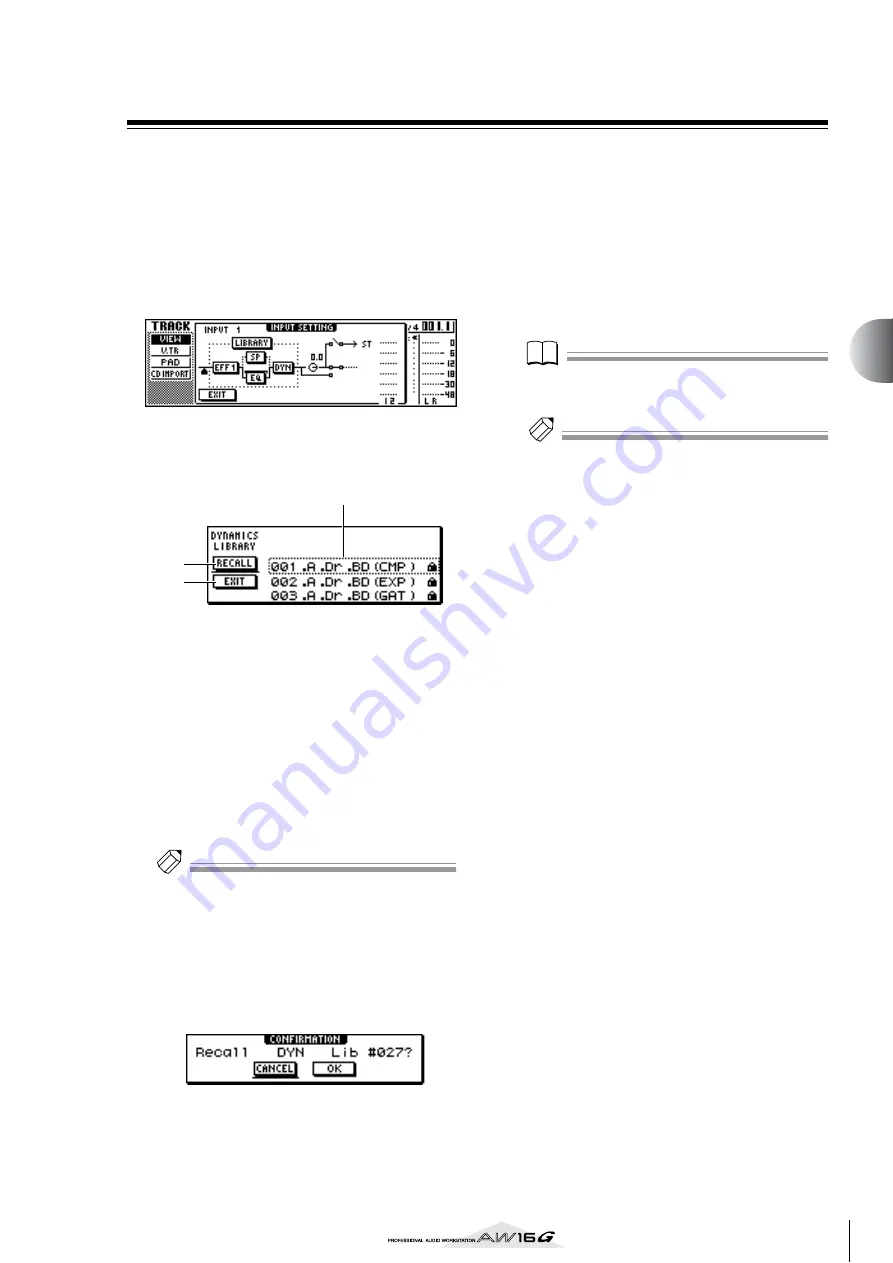
53
Tr
ac
k recording
5
Using the dynamics library
The dynamics library contains dynamics settings suitable
for a variety of instruments. As for the EQ library, you can
use this to apply dynamics processing to an input chan-
nel while you record, or when you want to modify the
dynamics settings after recalling an input library.
1
Press and hold the [INPUT SEL] key of the
input channel for which you want to use the
dynamics library, to access the INPUT SET-
TING popup window.
2
Move the cursor to the DYN button in the
screen, and press the [ENTER] key.
The dynamics library will appear.
1
List
This is the library list. The line surrounded by a dot-
ted line in the middle of the list is the data that is
selected for loading. When you turn the [DATA/
JOG] dial, the data in the list will scroll upward or
downward.
B
RECALL button
Move the cursor to this button and press the
[ENTER] key to load the currently selected data.
C
EXIT button
Move the cursor to this button and press the
[ENTER] key to close the popup window.
Tip!
Tip!
You can also access the dynamics library by pressing the
[DYN] knob of the Selected Channel section. For details,
refer to “Using libraries and scene memories” (
3
Turn the [DATA/JOG] dial to select the library
that you want to use, and press the [ENTER]
key.
A popup window will ask you to confirm the library
recall operation.
4
Move the cursor to the OK button and press
the [ENTER] key.
The selected dynamics library will be loaded.
5
Move the cursor to the EXIT button and press
the [ENTER] key.
6
If you want to adjust the dynamics settings,
turn the [DYN] knob of the Selected Channel
section.
Turning the [DYN] knob immediately after a library
has been recalled will simultaneously adjust multi-
ple dynamics parameters to control the dynamics
effect. (The result will depend on the library that
you select.)
Note
Note
If turning the [DYN] knob does not change the tone,
check whether dynamics may have been turned off for
that channel (
Tip!
Tip!
If necessary, you can also make detailed adjustments to
the individual dynamics parameters. For details, refer to
“Using libraries and scene memories” (
2
3
1
Summary of Contents for AW 16G
Page 1: ...E Owner s Manual Owner s Manual Owner s Manual Keep This Manual For Future Reference ...
Page 8: ...Contents 8 ...
Page 26: ...Introducing the AW16G 26 ...
Page 32: ...Listening to the demo song 32 ...
Page 38: ...Recording to a sound clip 38 ...
Page 54: ...Track recording 54 ...
Page 136: ...Track editing 136 ...
Page 218: ...Appendix 218 Block diagram ...






























